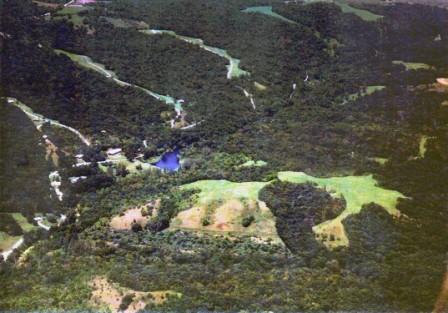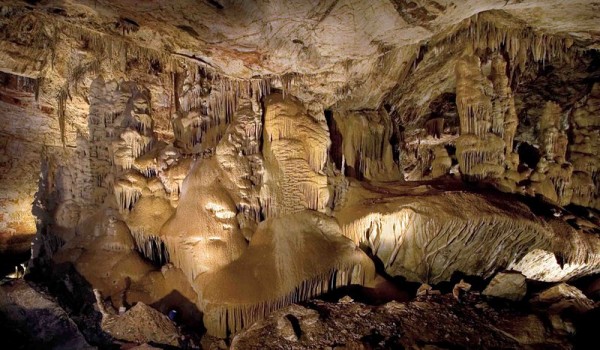
A rustic sign welcomes you to Franconia State Park, NH
Intro: One of the most famous parts of 1-93 is the eight mile stretch that winds between the Kinsman and Franconia mountain ranges, and through Franconia Notch State Park.
Franconia Notch is home of the famous Old Man of the Mountain, which could be seen from two spots on the highway until it crumbled after nearly two centuries. The park is filled with easy to get to, family friendly activities, like the Flume Gorge Visitor Center, the aerial tramway at Cannon Mountain, and the New England Ski Museum.
You can swim at Echo Lake, fish at Profile Lake, bike on the Recreational Trail, go rock climbing, see wildlife or hike on the Appalachian Trail.
Famous for: Old Man of the Mountain, gone now, but you can still see cool pix, and where it used to be.
This striking profile was discovered in 1805, and made famous as “Great Stone Face” by notables like Nathaniel Hawthorne and Daniel Webster. Natural erosion finally took their toll when the profile collapsed on May 3, 2003.
Admission:
DAY-USE:
Adults: $4.00; Children ages 6-11: $2.00
Children ages 5 & under, NH residents age 65 & over: FREE
Families with young kids will like: Cannon Mountain Aerial Tramway
Take the 8 minute tram ride to the 4,180′ summit of Cannon Mountain and see the mountains of four states plus Canada on a clear day. At the top you can walk around, hang out on the observation deck or in the cafeteria. Bonus: restrooms.
Families with teenagers will like: Flume Gorge & Visitor Center
The dramatic natural gorge was discovered in 1808, and extends 800 feet from the base of Mount Liberty. You can walk through the Gorge, or see the whole area on a two mile loop hike, which includes lots of up hill and stairs. You can also get out of the summer heat and watch a 20-minute movie about the park.
Other travelers will like: Boise Rock
It’s a bit of a gory tale, but travelers who enjoy oddities or the travel essays of Sarah Vowell will probably be fascinated by the story of Thomas Boise survived the night by wrapping himself in his horse’s body.
One night in the early 1800s, Thomas Boise got stuck in a blizzard. He killed his horse, skinned it, and wrapped himself in it, and spent the night under a rock. Rescuers had to cut him out of the frozen hide, still living but in need of a new horse.
If that story doesn’t put you off your lunch, there are some lovely picnic tables and a great view right by the chunk of granite that sheltered Thomas Boise.
Easy site seeing: Echo Lake Beach
Drive up to the lake, hang out at the beach, with life guards on duty, and enjoy a quick lunch from the snack bar. Perfect summer afternoon!
Best hotel in the park: Lonesome Lake Hut
Okay, it’s more of a cabin than a hotel, and you have to hike in with your own sleeping bag. But it’s an easy 1.75 mile hike, great for kids, and it’s open year round. You can even ski in during the winter!
Best campground in the park: Lafayette Campground and Lodge
Centrally located, Lafayette Place can be your base of operations for every kind of park activity, from hiking, to biking, fishing, swimming, plus all of the nearby attractions of the White Mountains.
You’ll find shaded spots, with open fireplaces, parking — and of course a picnic table at each of the 88 “by reservation” campsites, plus seven first-come/first-served spots. Bonus: coin-operated showers and a camp store.
Open from Memorial Day weekend through Columbus Day weekend, with self-service/self-pay camping available during the off season, weather permitting.
Worst lodging experience: Getting caught in a thunder and lightening storm while camping in the mountains. Pack rain gear, even if you don’t think you need it.
Best months to visit for weather: It’s a year round park, with summer and winter sports, gorgeous fall foliage, and plenty of stunning waterfalls that will awe you during the spring melt.
Best months to visit to avoid crowds: It’s always pretty crowded, the shoulder seasons will have slightly fewer people, but also worse weather.
Nearest major cities: They aren’t really cities — this is New Hampshire we’re talking about — but these towns are nearby: Franconia, Sugar Hill, Easton, Bethlehem, Bretton Woods, Littleton, Lincoln, and North Woodstock
More info can be found at the always helpful New Hampshire State Park site.
Related posts:
Photo courtesy of: New Hampshire Division of Parks and Recreation











